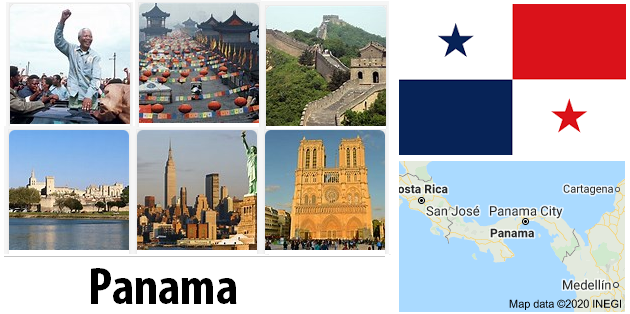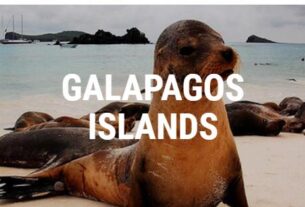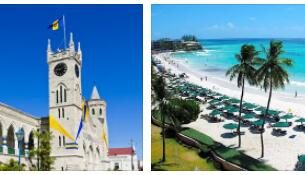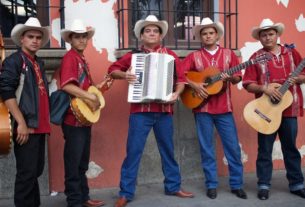On the first sighting of the coasts of Panama there are uncertain news that give A.de Ojeda as the first arrival in 1499; instead it is certain that in 1501 he was sailing in the R. Galvan de Bastidas area, but in 1502, on his fourth voyage, it was Columbus who explored them in all their extension. He also tried, but to no avail, to found a colony which, however, was created in 1510 by Diego di Nicuesa, who was governor of the province called Castilla del Oro. Also in the same year this colony was moved to the banks of the Tuyra by Martin Fernandez de Enciso, former companion of Ojeda, who founded the city of Santa Maria la Antigua del Darien there
.
However, Enciso was forced to abandon the city due to the revolt of the colonists who passed under the command of Vasco Nunez de Balboa, former companion of Bastidas. Nunez continued his explorations and in September of 1513 sighted the Pacific and took possession of it in the name of the King of Spain.
His successor Pedro Arias Davila founded the city of Panama, which is the oldest of the cities left among all those created by the “conquistadores”.
Many governors took turns: it was important to Francisco de Barrionulvo (1534/36) who started his studies for the construction of a road between the two oceans; but he had to abandon the idea because it was clear from the outset that the company would require large sums, then unavailable.
In the period 1535/39, under the governorship of Pedro Vasquez de Acuna, the era of conquest ended as the colony began to acquire a certain stability.
In the long following period (1539-1745) many different events took place: the revolt and the liberation of the black slaves; pirate raids, especially British ones, such as Drake and Morgan; the work of the Jesuits.
The slaves, in fact, introduced by the “conquistadors”, kept in an absolutely low level of life, rebelled led by their king, Bayano, who after a resistance of a few months, had to surrender and then was executed in Seville.
In the last years of the sixteenth century, the events of greatest sensation were undoubtedly the raids of pirates, corsairs and buccaneers. The most famous, the Englishman Francis Drake, after having plundered several cities, razed them to the ground. Among these the city of Nombre de Dios, which was later rebuilt and took the name of San Felipe de Porto Bello (1597). This, in a short time, assumed considerable importance because the Spanish galleons departed from its port and returned to their homeland. At the beginning of the following century the raids resumed in the area by the pirate Morgan who then destroyed, after the looting, the two cities of Porto Bello and Panama.
Other pirates again repeated vandalism and looting throughout the century and culminated in the arrival of Scottish expeditions, whose chief William Paterson established his companies on the shores of the Gulf of Darien.
However, they were forced to abandon the territory, both because of the climate not congenial to them, and because of the repeated aggressions brought by the Spaniards.
In the years from 1728 to 1741 the invasion that the Mosquitoes of Nicaragua made in the area was impressive, a tribe of Indians who, with the help of hordes of privateers, brought death and destruction. This situation was interrupted by the mestizo Luis Garcia who, helped by the Spanish forces, he freed the area. Then, however, not believing that he had been rightly rewarded, he began a series of rebellions which ended with his capture and death sentence.
Then came attempts to conquer by the British who tried in every way to destroy the flourishing Spanish trade. And finally, the Jesuit fathers tried by every means to convert indigenous peoples. Several of them were slaughtered by the savage “Indios” and they decided to abandon the enterprise.
Furthermore, in the meantime, the Spanish galleons embarked on their trades on the safest, albeit longer, route of the Cape Horn, thus decreeing the end of the thriving economy of Porto Bello, whose population lived on these trades. See Countryaah for population and country facts about Panama.
Then the ruin was completed because the capitals, which until then had been invested in Panama, took other roads and also the mining area of the Darien was abandoned after several French citizens, protected by Spain, were slaughtered by the natives (1758).
Many attempts were made to bring trade and, therefore, well-being back to Panama, but most of the population consisting of Spaniards, Creoles, mestizos, Negroes and Indians, had moved to rural areas to devote themselves to agriculture and livestock of cattle. Many workers worked in the workshops that gradually formed.
Education also suffered a severe blow after the Jesuits were forced by the King of Spain to leave the colonies in 1767.
In this situation the liberal ideas already spread in Europe by the French Revolution. Vain were two expeditions, one Scottish and one Ecuadorian, sent with the attempt to dampen the first rebellion movements of 1819. From here the separatist movements of the people began and on November 28, 1821 the independence of Panama was proclaimed and its union with the Colombian Confederation, which lasted until November 4, 1903 when, after 82 years of attempts at rebellion, it truly achieved independence on November 4.
Shortly after the recognition of the new Republic, both by the United States and Colombia, the Hay-Bunau-Varilla treaty was signed for the transfer to the United States of the “Canal Zone”.
The precarious economic situation in 1933 also saw the devaluation of the “Balboa” and in 1937 the external debt rose to 150 million, and in the same year the borders with Colombia were defined, thus closing, a long-standing diatribe, and the United States increased annuities relating to the “Zona del Canale”, bringing the $ 250,000 gold to 430,000. This last act was ratified, however, only in 1939. All under the presidency of Juan Demostenes Arosemena, who died on December 16, 1939.
The government took over the first Vice-President ASBoyd who gave impetus to the defense of the Canal and the motor road between Panama and Colon, thus forfeiting those revenues that had been missing due to the decrease in tourism.
On June 2, 1940 the presidential elections were won by Arnulfo Arias. He immediately made some changes to the Constitution; extended the presidential term from 4 to 6 years; he removed the vote from non-Spanish-speaking Negroes; banned immigration to “Africans” and “Asians”; reformed the judicial organization and social insurance.
For his xenophobia, for the reduction of freedom and for a certain sympathy towards totalitarian regimes, Arias provoked strong opposition. He then suffered a peaceful coup d’état (attributed to the United States) and in his place was elected Rade the Guard who on 9 December 1941 declared war on Japan; the next day to Germany and Italy, with the seizure of various steamships including “Biancamano”. The Spanish charge de conte de Bailen was expelled; the United States was allowed to build bases on Panamanian territory, thus giving work to numerous unemployed.
On January 4, 1943 the National Assembly renewed the mandate to de la Guardia for another two years. At this point the opponents, supporters of Arias, proclaimed unrest and he then suspended the Constitution, replaced the ministers and prohibited all mass demonstrations.
After the United States finished defending the Canal, unemployment rose considerably. An attempt was made to remedy by giving way to building construction and giving impetus to agricultural work, also because the discomfort of the precarious economic condition was aggravated by the scarcity of foodstuffs.




